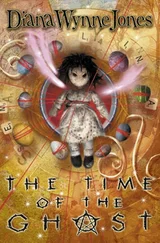Whatever this success, all other claims have been premature. Two hundred or so patients with cystic fibrosis have been treated and the best result has been a small and transient improvement in symptoms. The technology has risks of its own. One American patient with liver disease was injected with an engineered virus based on that for the common cold and died as a result. Many others in the trials have not survived (although most were already desperately ill). Some of the most frequent diseases are going to be difficult to treat. To cure sickle-cell would involve targeting tiny numbers of cells deep within the bone marrow, as it is these and not the red blood cells which produce the faulty haemoglobin. For diseases such as muscular dystrophy it might be necessary to deliver a gene direct to millions of separate muscle cells, and to ensure that it is switched on at just the right level of activity.
Molecular biology could be used in medicine in many other ways, some of which have attracted the 'gene therapy' label. Cells can be engineered to carry genes that destroy cancer cells or cause them to stop dividing. It might be possible to introduce DNA that stimulate the immune system's own defences inro cancer cells themselves, providing them with the seeds of their own destruction. Another ingenious idea is to insert drug-metabolising genes into such cells, and then to treat them with a chemical that is broken down into a poison — but only in cancer cells. To establish the DNA sequence of a faulty gene also gives the prospect of making 'anti-sense' nucleic acid which binds to the genetic message and blocks it to turn off genes that have gone wrong. All this lies in the future.
The new biology offers more hope for improvements in diagnosis. Molecular probes can detect mutations long before symptoms first appear. Cancer cells often develop unusual antigens on their surface as new genes are switched on. It may become possible to work out the shape of the protein involved and to make a match that sticks to the relevant place. Not only will this show where the damage lies, but if a drug is attached, it may be possible to point a treatment straight at its target.
Engineering might do even more: in theory it could be used to treat generations yet unborn. In mice this has already succeeded. Genes inserted into sperm or egg cells may be passed on. The germ line, as it is known, has been changed. Such 'transgenic mice' are valuable research tools. If genes for a human disease are introduced they can used tostudy its symptoms (although these may differ those found in humans themselves) and the mice may be used to test drugs. Transgenic mice have been made for sickle-cell anaemia and other inherited illnesses, as have transgenic pigs with some of the genes for human cell surface variation. Their organs — heart and kidney — are about the right size for a transplant and are more acceptable to a human recipient than they otherwise would be. Such pigs look just like pigs; but, to our immune system, resemble a human being. A counterfeit heart has not yet been used for transplantation, but soon may be. As more than a hundred and fifty thousand people die in Britain each year because it is impossible to find a matching organ this may become important in medicine.
Every therapy must work to rules. Everyone has rights to their own body and can decide whether or not to accept treatment. The same logic can be applied to genes. To replace damaged DNA, should that become possible, is not much different from transplanting a kidney and the same choices must be made by the person who receives it. To change genes in sperm or egg is different because it alters the inheritance of someone who has no choice. Many feel that on this and other grounds germ line therapy is unacceptable and have tried to add to the Universal Declaration of Human Rights a statement that everyone has the right to a genetic constitution that has not been changed.
Given that any medical advance is likely to alter the genes of future generations that seems a little too inclusive; and the failure of gene therapy puts the notion for the time being in the field of speculation. However, another set of technologies which once seemed impossible has — in contrast to gene manipulation itself- turned out to be remarkably simple. Their potential use on humans has caused a storm; but that is nothing new.
Genetics outside the uterus allows reproduction to be controlled. It ranges from artificial insemination to surrogate motherhood to germ-line therapy to cloning. Each one was, on its introduction, greeted with horror (and British children born by donor insemination were once defined to be illegitimate because of the objections by the bishops) but most in the end were accepted. However, as Raskolnikov puts it in Crime and Punishment: 'Man gets used to everything — the beast!' Philosophers talk of the 'yuk factor', the automatic revulsion about interfering with our reproduction. Forty years ago it was, on just those grounds, illegal in Britain to save eyesight by grafting on a cornea from a dead person. Philosophy, it seems, is not much help to the blind.
The first recorded artificial insemination was by the eighteenth century Scottish anatomist John Hunrer who used a syringe to impregnate a woman whose husband had a deformed penis. Since then, to assist the work of nature has become commonplace. Artificial insemination outside the body had to wait until 1978, when sperm met egg in a test-tube to produce Louise Brown. The technology is less simple than it sounds, as eggs in the right stage of development must be retrieved from a potential mother; but, even so, about one in four attempts succeed. After hormone treatment, eggs are sucked from the ovary with a fine needle and fertilised with the relevant sperm. This need not happen at once as eggs can be frozen for later use. After a few divisions, the fertilised egg is returned to the uterus; either of the natural mother or, if she has reproductive problems, into a volunteer. Often, more than one is used (which sometimes leads to several children being born); and, somerimes, the ball of developing cells is screened to check whether it carries a genetic abnormality before deciding to continue. About one British birth in a hundred is a test-tube baby and there are about half a million such children in the world today.
Often, the problem lies with the male. Perhaps his sperm is of such low quality that it cannot penetrate the egg. Sometimes, indeed, it is quite unable to move and cannot escape from the testes. In such cases, sperm can be extracted with a needle and sperm heads injected into the egg. Fertilisation over, the egg is implanted or frozen for later use. Some suggest, indeed, that given the increase in genetic damage in the children of older parents it might be wise for a woman to freeze a sample of her eggs during her teens to ensure the health of future children. For a man the task would be even easier.
All this has led to controversy (including questions as to who might own a dead man's sperm) but is becoming part of medical practice, with hundreds of clinics available across the world. Genetics is often involved, with a check for defects in the fertilised egg. Surrogate motherhood, too, has become common since the first fertilised egg was implanted into an unrelated female in Iceland in 1989. It contains some unpleasant reminders of social reality. In almost every case the surrogate is poorer and less educated than the egg-donor (which, at up to $50 000 a pregnancy in the United States, is not surprising). For all these procedures the yuk factor has been forgotten, but for cloning it remains.
I write as a clone and the son of a clone; and one of the few British citizens entitled to commit incest. A clone, of course: we are all one of those, for the billions of cells that we contain are — each of them — copies of the fertilised egg that made us, reproduced without benefit of sex. My mother, as it happens, is an identical twin (one of two hundred thousand or so in Britain), so that another individual shares all her genes. Her twin — her clone — in turn, has a daughter who is legally my cousin, but in genetic terms a half-sister. The question has never arisen, bur there is no legal impediment to marriage, close relative though she is.
Читать дальше
Конец ознакомительного отрывка
Купить книгу












